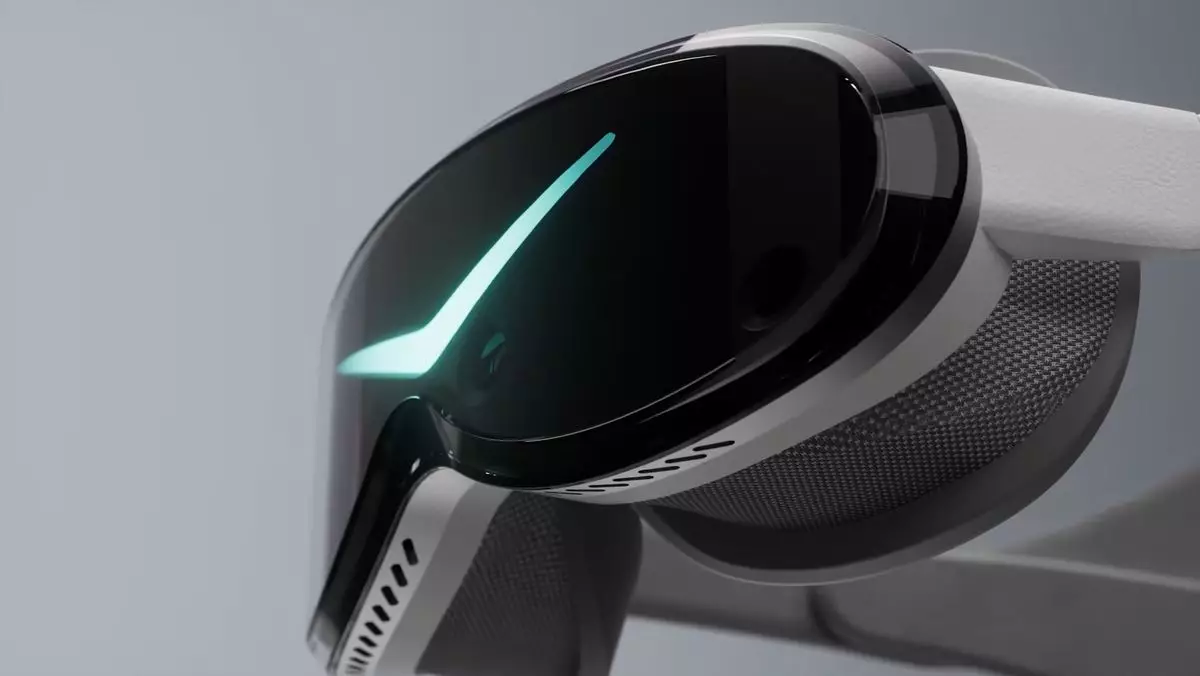In the ever-evolving landscape of virtual reality (VR), the weight and technological specifications of headsets play a crucial role in user experience. Recently, Pimax announced the Dream Air, an upcoming VR headset that not only promises to be lighter than current market leaders but also incorporates cutting-edge technology. Weighing in at under 200 grams, the Dream Air is touted to revolutionize how consumers interact with virtual environments. With its sleek design and advanced features, it poses a challenge to existing VR giants, hoping to carve a niche in a crowded marketplace.
Pimax claims the Dream Air is the “smallest, full-feature 8K resolution VR headset,” and its physical characteristics certainly back this assertion. Designed with a form factor that weighs less than half of a standard Coca-Cola bottle, the headset introduces a paradigm shift in how VR devices are perceived. Traditional headsets often weigh over 600 grams, creating a cumbersome experience for users. The Dream Air embraces the minimalist approach, combining aesthetics with engineering prowess. With features like Micro-OLED panels and pancake optics, Pimax aims to provide a visually immersive experience without compromising comfort.
While weight is an essential factor, the technology powering the Dream Air is what sets it apart. Pimax has equipped the headset with advanced features including eye tracking, integrated spatial audio, and hand tracking—all within its compact design. Such capabilities enhance immersion, making virtual experiences feel more real and responsive. Eye tracking, in particular, allows for nuanced interaction within virtual worlds, setting the Dream Air apart not just from its predecessors but also from competitors like the lightweight Bigscreen Beyond, which lacks such functionality. This innovative approach invites users to dive deeper into VR, enhancing gaming, simulation, and social experiences alike.
However, all these features come with a hefty price tag. With an initial reservation fee of $1,199 and a final cost nearing $2,000—excluding taxes and shipping—the Dream Air is poised as a premium product. This pricing strategy could limit its accessibility to a broader audience but seems justified given its technological advancements and lightweight design. In comparison, the Pimax Crystal Super, which retails for $699, is also aiming for market share with its bulkier but modular capabilities. Thus, potential buyers may need to weigh their priorities—do they prefer modularity over portability, or does the advanced feature set of the Dream Air supersede cost concerns?
Performance Insights and Future Prospects
As it stands, the Dream Air is set to begin shipping in May 2025, promising cutting-edge features that could reshape expectations within the VR community. The VR industry is still burgeoning, and as with any innovative product, its true success will hinge on real-world performance assessments and user feedback. Despite mixed reviews of the original Pimax Crystal, the forthcoming Crystal Super may alter perceptions, thereby directly impacting the Dream Air’s market presence.
The Pimax Dream Air represents not just a new product but a bold statement about the future of virtual reality. Incorporating advanced technology within an exceptionally lightweight design, Pimax is setting a new standard in the industry. As users increasingly seek more immersive and comfortable experiences, the demand for such products is likely to grow. Whether the Dream Air will successfully capture the imaginations—and wallets—of VR enthusiasts remains to be seen. Yet, its arrival marks a significant milestone in the quest for the ultimate VR experience. The future of virtual reality looks promising, and Pimax is keen to lead the charge with its groundbreaking innovations.

